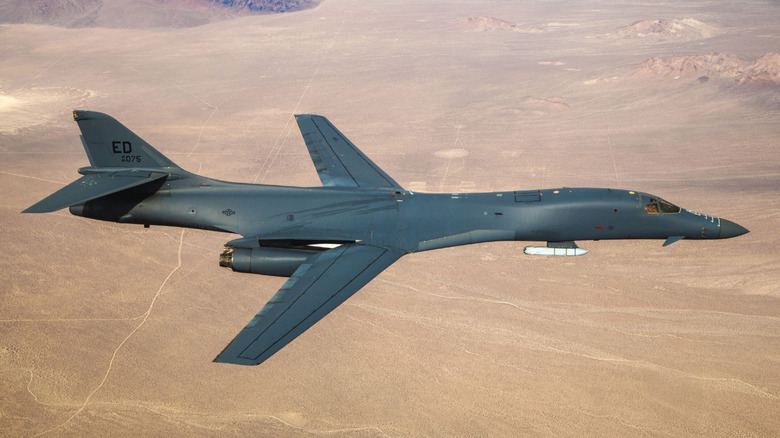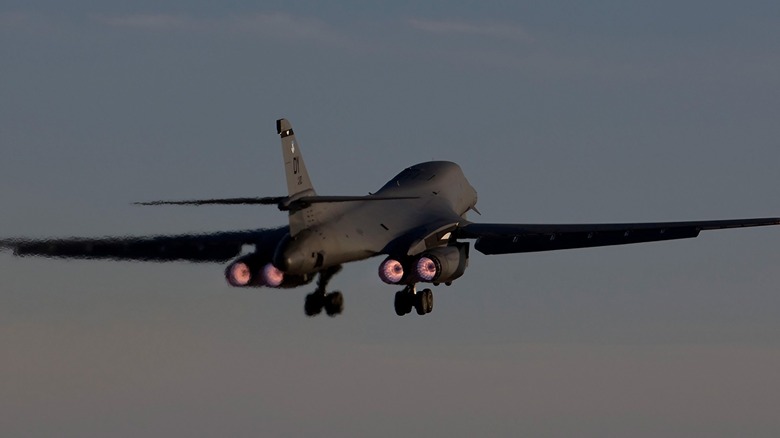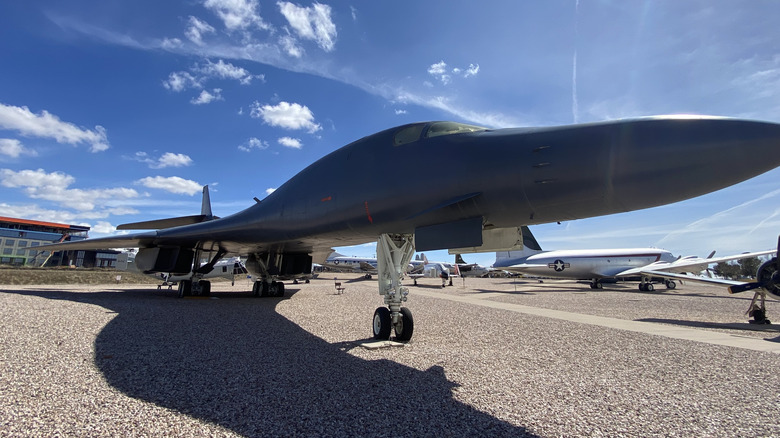B-1B Lancer Top Speed: How Fast Can The Bomber Fly?
The B-1B Lancer, affectionately known as the "Bone," is a striking piece of military hardware. The first thing you'll notice about it is its design. It looks like something straight out of a sci-fi movie with its sleek lines and variable-sweep wings. But it doesn't fly quite as fast as a fictional starship. This veteran heavy bomber can achieve speeds exceeding 900 mph, which translates to Mach 1.2 at sea level.
These numbers would have been much higher had its predecessor, the B-1A made it to production. Designed to replace the Boeing B-52, that original model was designed for a much faster Mach 2.2. However, in 1981, intentional modifications during the Reagan administration to reduce the B-1B's radar cross-section for better stealth ultimately capped its top speed. These changes also greatly increased the bomber's payload capacity.
Despite the limit, the B-1B's variable-geometry wings give it strong performance across different flight conditions. They sweep back for high-speed flight and extend for takeoff and landing. Thanks to this and its overall maneuverability, the B-1B holds nearly 50 world records in its class for speed, payload, range, and time to climb. It remains the "backbone" of the USAF's bomber fleet even today.
It's not all about the speed
Speed isn't the only aspect that makes the B-1B an imposing force, as it remains a standout among modern jet bombers still in service for its flexibility. It also boasts the largest conventional payload capacity in the U.S. Air Force inventory, capable of carrying a staggering 75,000 pounds of ordnance internally, plus more externally. This includes a wide variety of weapons, such as 500-pound Mk-82 bombs, 2,000-pound GBU-31 Joint Direct Attack Munitions (JDAMs), AGM-158A standoff missiles, and naval mines.
Its blended wing/body and low-radar signature enhance its survivability and are complemented by a robust electronic warfare suite featuring jammers, radar warning receivers, and decoys. At the same time, its advanced synthetic aperture radar allows it to track moving vehicles and follow terrain with precision. Additionally, the B-1B has an intercontinental range of more than 6,500 miles, but with air refueling, that range becomes virtually unlimited.
This allows it to loiter over targets for sustained operations. Modern data links like Link-16 also let it operate alongside other assets in coordinated strike missions. Together, these features help the bomber maintain its status as a core component of America's long-range bomber force.
How it has performed in operations
Though originally built to deliver nuclear warheads, the B-1B never had to make good on that grim mission. Instead, it's spent the last two decades proving itself as a conventional strike workhorse in conflict zones like the Middle East. Its combat debut came during Operation Desert Fox in 1998, where four B-1Bs dropped 188 unguided bombs on strategic targets while under anti-aircraft fire.
In 1999's Operation Allied Force, just six B-1s accounted for over 20% of total munitions dropped, despite flying less than 2% of sorties. That trend continued into the 2000s. For instance, during the first half-year of Operation Enduring Freedom, eight B-1s delivered nearly 40% of the total bomb tonnage, including almost 4,000 JDAMs. During Operation Iraqi Freedom, B-1s flew under 1% of the combat missions but delivered 43% of the JDAMs used.
The B-1B is actively deployed even today, over 40 years since its introduction. Its continued service comes as the Air Force prepares to introduce the B-21 Raider, a next-generation stealth bomber designed to carry both conventional and nuclear payloads and operate in high-threat environments. The Air Force plans for it to eventually take over many of the roles held by the B-1B and B-2.


